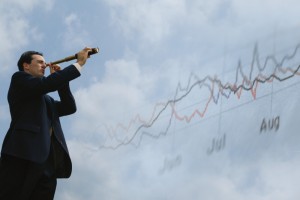
The unstoppable rise of the data scientist in marketing has transformed the industry. Previously seen as creative, intangible and emotional, marketing has gone under the knife of measurement and awoken in a strange new binary world.
But before we consign creativity to the work of algorithms and witticisms to machine generators, it’s clear that the ‘magic’ of marketing still has a role alongside the data analysis.
In my last blog post, I explored what creatives learn from statisticians and now it’s time to turn the tables and see what the left-side of the brain can absorb from the right.
1. Marketing is all about people
Sometimes we need to see through the numbers to the people behind. It can be easy to lose yourself in the process of perfecting a model, an algorithm or a prediction, but we always need to come back to the people behind the numbers. If we forget this, then it becomes easy to stray in to creating marketing monsters: campaigns that are ill considered have the potential to become unethical or downright creepy.
2. Imagery is an important part of communication
No matter how clever the analysis, when it is poorly presented it is difficult for others to understand. The human mind has evolved to respond to visual stimulus and if you want your work taken seriously, you will need to find ways to help others understand it. The best way to do that is visually.
This may be achieved using one of the many charts and graphs that we have access to, but it could easily be equally something more creative. And when you plan to use graphics and images, think carefully about colour, proportion and ordering, and how these can help you communicate your findings.
3. Engage the heart as well as the head
You need to be able to tell stories – the data will not speak for itself. For thousands of years humans have used stories to pass wisdom among themselves. The role of stories is to help us understand complex situations, which then helps us make decisions confidently. And the stories we can tell are often held closely inside our numbers.
If we want our data to really make a difference, then being able to create a narrative that is concrete, empathetic and engaging will pay dividends. Taking decisions based on anecdotes may be foolish, but using anecdotes to illustrate data and drive a decision is a smarter approach than simply running a model and expecting the "data to speak for itself."
We validated this idea of finding improvements in marketing by leveraging both sides of the brain recently in research titled, ‘What Kind of Marketer Are You’? Take a moment to read it and gain more insights into how quantitatively- and qualitatively-oriented marketers can both up their game by borrowing from each others' playbooks.
